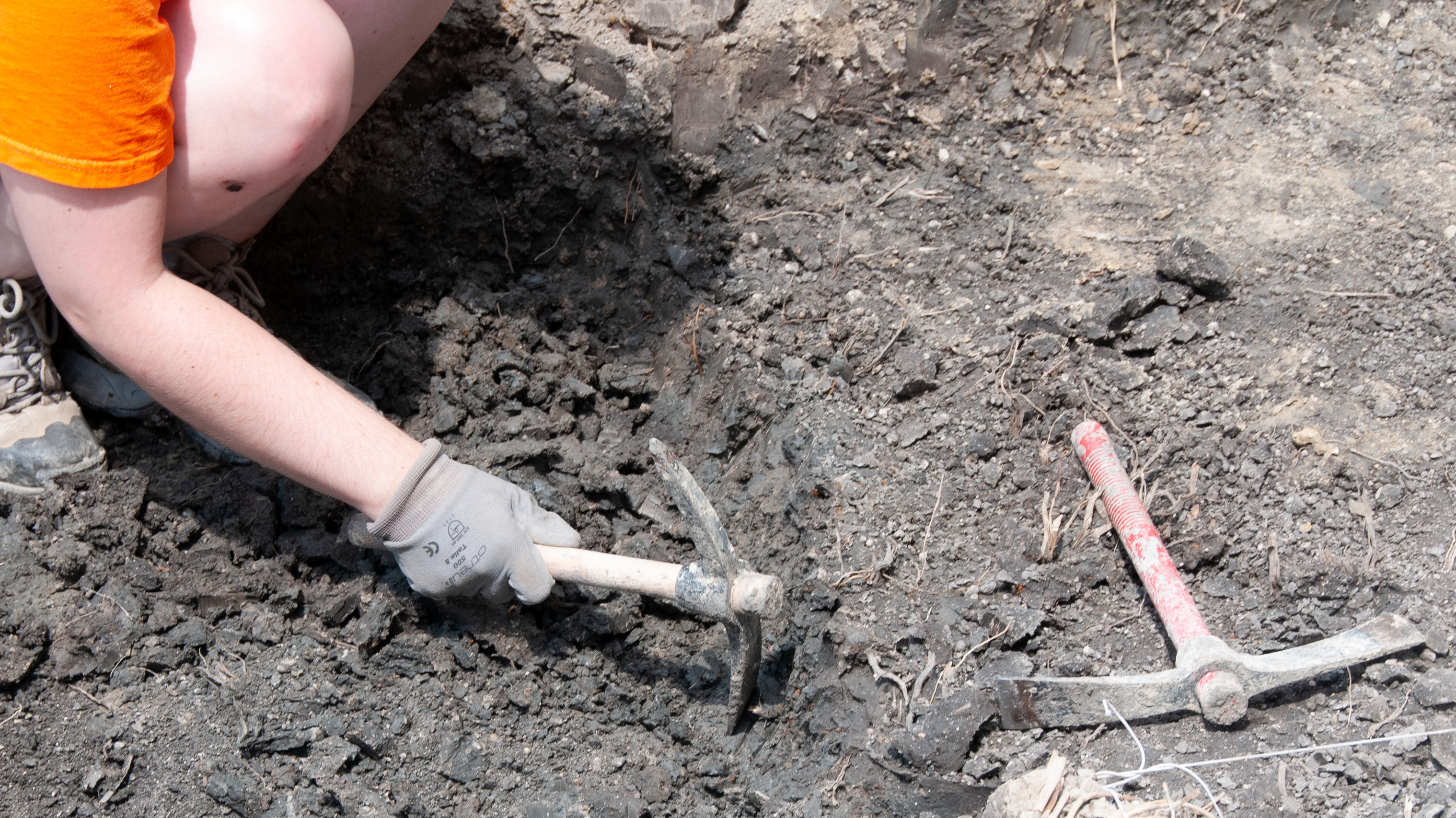Show me your teeth and I'll tell you in what climate you live

A study led by ICP-CERCA improves the understanding of the paleoenvironment of the Miocene site of Can Llobateres, which records one of the latest great apes from mainland Europe. The study, based on the dental morphology of large herbivorous mammals, indicates a tropical seasonal forest or rainforest, contributing to the understanding of the local extinction of primates and other forest-adapted taxa during the Late Miocene.
The fossil site of Can Llobateres, discovered in 1926, is located in the municipality of Sabadell within the Vallès-Penedès Basin (NE Iberian Peninsula). It includes two localities, Can Llobateres 1 and 2, which date back to the Late Miocene (9.8 Ma and 9.6 Ma, respectively). This site, which has figured prominently in the study of Miocene mammals from Europe, has yielded abundant remains of the fossil great ape Hispanopithecus laietanus. Previous studies, based on plant and mammal remains, concluded that Can Llobateres 1 records a marshy environment surrounded by dense forest and more open areas nearby.
An international team led by the Institut Català de Paleontologia Miquel Crusafont (ICP-CERCA) recently published in Journal of Human Evolution a new paleoecological study of the site that refines previous paleoenvironmental inferences. The research is based on a scoring scheme termed “functional crown types” (FCT), which quantifies the main morphological traits of herbivorous large mammal teeth from a functional viewpoint. Tooth morphology is adapted for processing the types of food eaten by each species. For instance, extant horses have high-crowned teeth with tight ridges and folds, suitable for processing abrasive plants such as grasses. In contrast, pigs have low-crowned molars with rounded cusps indicative of a more omnivorous diet. A few years ago, the relationship between climate and tooth shape in large herbivorous mammals (odd- and even-toed ungulates, elephants, and primates) was investigated in Kenyan national parks, demonstrating that the former can be estimated based on the dental morphology of the species that live there. Second upper molars of the horse Hippotherium (top) and the pig Parachleuastochoerus (bottom) from Can Llobateres, in occlusal and buccal views. Scales equal 1 cm.
We applied this methodology to Can Llobateres 1, leading to estimates of mean annual temperature and precipitation that correspond to a tropical seasonal forest or savanna. Estimates of rainfall during the driest and wettest months further indicate the existence of two distinct seasons, a rainy and a dry one (when many trees lose their leaves). A different approach based on the FCT values for Can Llobateres 1 suggests instead that it was more likely a tropical rainforest, which agrees better with previous inferences derived from the study of fossil plants and mammals. Both types of environments are characterized by warm temperatures, but seasonal forests have more marked rainfall seasonality and, hence, a less lush vegetation, characterized by shorter trees with smaller leaves intermingled with some open areas.Schematic vegetation profile for Can Llobateres 1 based on macrofloral remains. Vegetation zones as well as names of characteristic plants are also indicated. Bold font indicates taxa that have not been recovered at Can Llobateres 1 but are found in other sites of the same basin. Artwork by Roc Olivé, modified from Arranz et al. (2023). Legend: 1) aquatic vegetation; 2) wetland forest; 3) open woodland; 4) herbaceous plants; 5) acacia trees.
All in all, Can Llobateres 1 may be reconstructed as a mosaic of habitats composed of a dense wetland/gallery forest with evergreen humid tropical elements such as palm trees, fig trees, and laurels, next to marshy areas populated by reeds, with more open woodlands farther from water dominated by acacia trees, shrubs, and herbaceous plants. The fossil ape Hispanopithecus displayed a frugivorous diet and would have thus preferred the humid forests next to permanent water bodies, where it could feed on fruits throughout the year. Besides soft, ripe fruits, it also likely consumed hard-shelled fruits during the unfavorable (dry) season, allowing it to survive despite the progressive environmental deterioration that took place during the early Late Miocene (approximately 10 Ma). Although this type of mosaic environments was probably common by this time, from then onward, as temperature dropped and seasonality increased, tropical and subtropical plants were progressively replaced by deciduous ones. Consequently, available habitats became unsuitable for forest-adapted taxa dependent on a continuous fruit supply year-round, such as Hispanopithecus, ultimately leading to their extinction in the Vallès-Penedès Basin and elsewhere in Europe.
Our results are consistent with previous paleoenvironmental inferences for Can Llobateres and therefore suggest that the FCT approach might be successfully applied to other Vallès-Penedès sites in the future. This methodology is thus most promising for studying the paleoenvironmental changes that ultimately led to the extinction of European apes during the Late Miocene.
Sara G. Arranz; Isaac Casanovas-Vilar; David M. Alba
Institut Català de Paleontologia Miquel Crusafont (ICP-CERCA)
Universitat Autònoma de Barcelona
sara.arranz@icp.cat; isaac.casanovas@icp.cat; david.alba@icp.cat
References
Arranz, S. G., Casanovas-Vilar, I., Žliobaite, I., Abella, J., Angelone, C., Azanza, B., Bernor, R., Cirilli, O., DeMiguel, D., Furió, M., Pandolfi, L., Robles, J. M., Sánchez, I. M., van der Hoek Ostende, L. W. & Alba, D. M. (2023). Paleoenvironmental inferences on the Late Miocene hominoid-bearing site of Can Llobateres (NE Iberian Peninsula): An ecometric approach based on functional dental traits. Journal of Human Evolution, 185, 103441. https://doi.org/10.1016/j.jhevol.2023.103441


